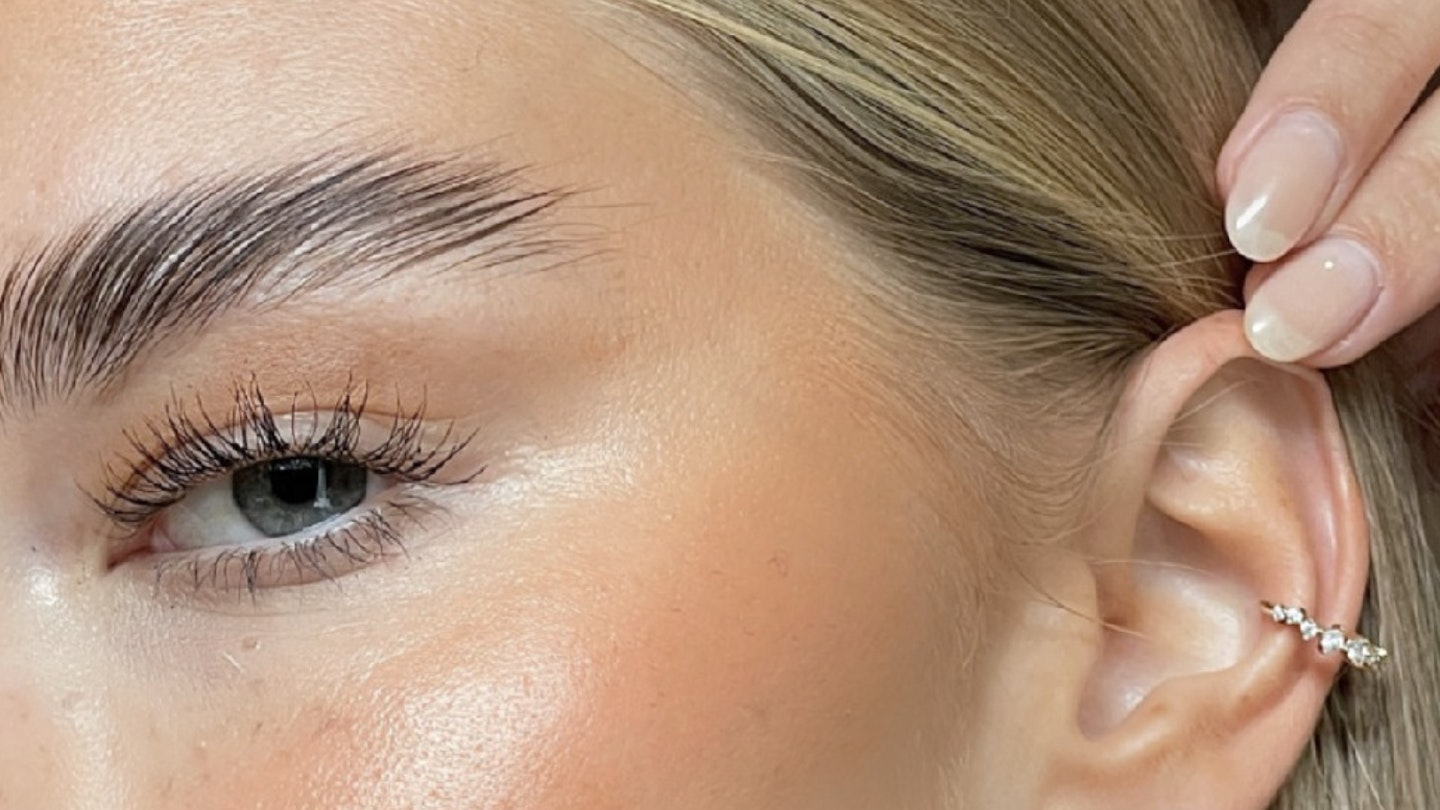Ear-piercings are having a moment right now. One that’s becoming more and more requested in salons the world over? The conch - and there’s celebrities like Rihanna and Kylie Jenner to thank for that. Fashion week 2024 saw an abundance of expertly curated stacks glittering with the latest offerings from Maria Tash and Monica Vinader - an ‘ear party,’ if you will. And a party it is. The ears of the fash-pack are laden with flashes of gold and silver, an eye-catching mesh of mixed metals that pack a serious punch. No longer does a single stud adorn the earlobe of jewellery enthusiasts. These days there’s an abundance of ear piercings to consider, from the helix and the tragus to the daith and the snug. And, of course, the aforementioned conch.
But what exactly is a conch piercing, how much does it hurt, and how long does it take to heal? Consider this article your need-to-know on all things conch piercings, with expert commentary from James Hook, Head Piercer at Monica Vinader and Hannah Grimes, Senior Global Services Manager at Astrid & Miyu.
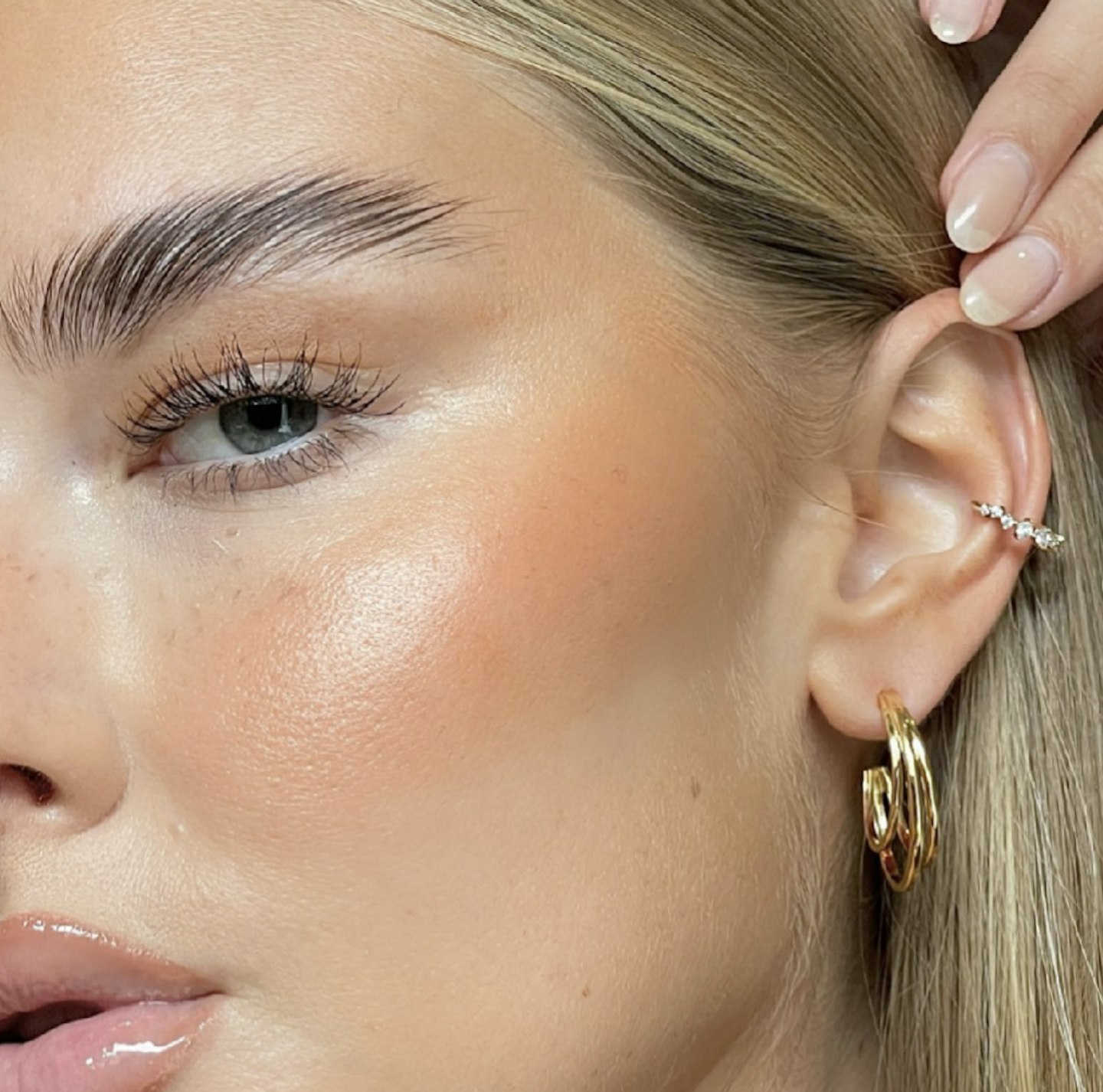
What is a conch piercing?
So, where exactly is a conch piercing? ‘Essentially a conch piercing is an ear cartilage piercing located in the central part of the ear,’ explains Hook. ‘It sits in the ear's innermost shell-shaped area.’ That’s where the name comes from - the fold of the ear resembles the spiral of a conch shell. It’s a pretty versatile piercing too - the conch can be pierced in two different areas: the outer conch, which is the larger and flatter area of the ear, or the inner conch, which is the smaller and curved area closer to the ear canal. And how to pronounce conch? That will be 'konch.'
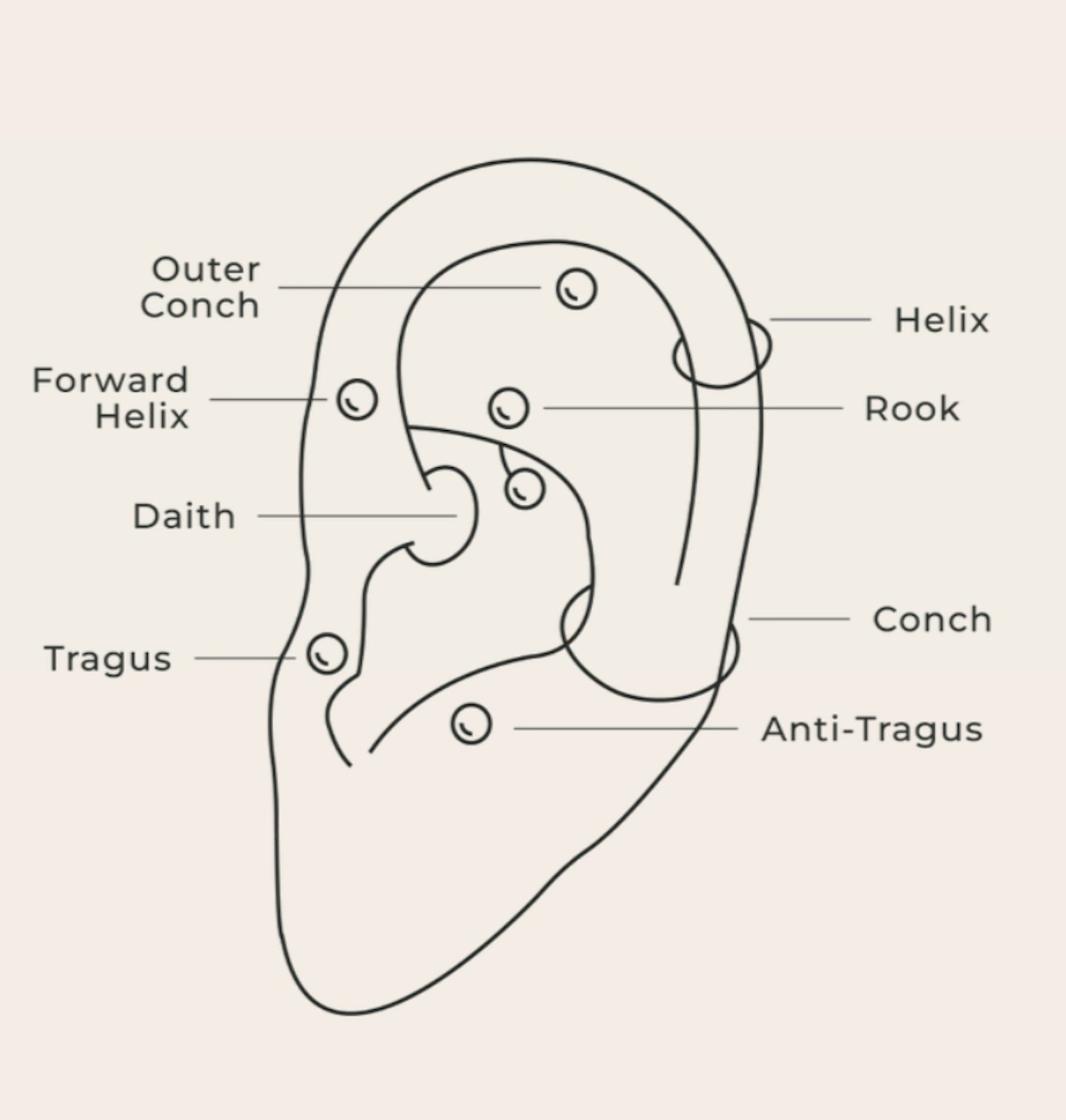
What is the procedure like?
Gun or Needle? The big debate. If you've been searching whether to go for the gun or the needle, we have the answer from the professionals. 'A cartilage piercing in general should always be done with a needle versus a gun to ensure proper healing and reduce any risk of infection', says Grimes.

www.astridandmiyu.com
This dreamy 11.5mm diamond hoop is a nice piece of jewellery to don when you're fully healed up.
How much does a conch piercing cost?
The price of a conch piercing varies depending on location and the jewellery chosen. For example Astrid and Miyu charge a flat rate of £20 for three piercings, but a separate fee for the jewellery which can range from £35-£55 each for titanium jewellery, or £100-£195 each, for solid gold. At Monica Vinader you can get a conch piercing from £55 with titanium jewellery or from £90 with solid gold jewellery. If you’re trying to work out the best value for money, it may just come down to choosing a piercer that stocks the jewellery you prefer. Our advice? Don’t choose a salon with a ridiculously low fee. Often you’ll get what you pay for. Instead, go to a reputable piercer who ensures sterile practices - don't be afraid to ask questions if you're in doubt. And remember that scrimping on the cost of your piercings is a quick recipe for infection.
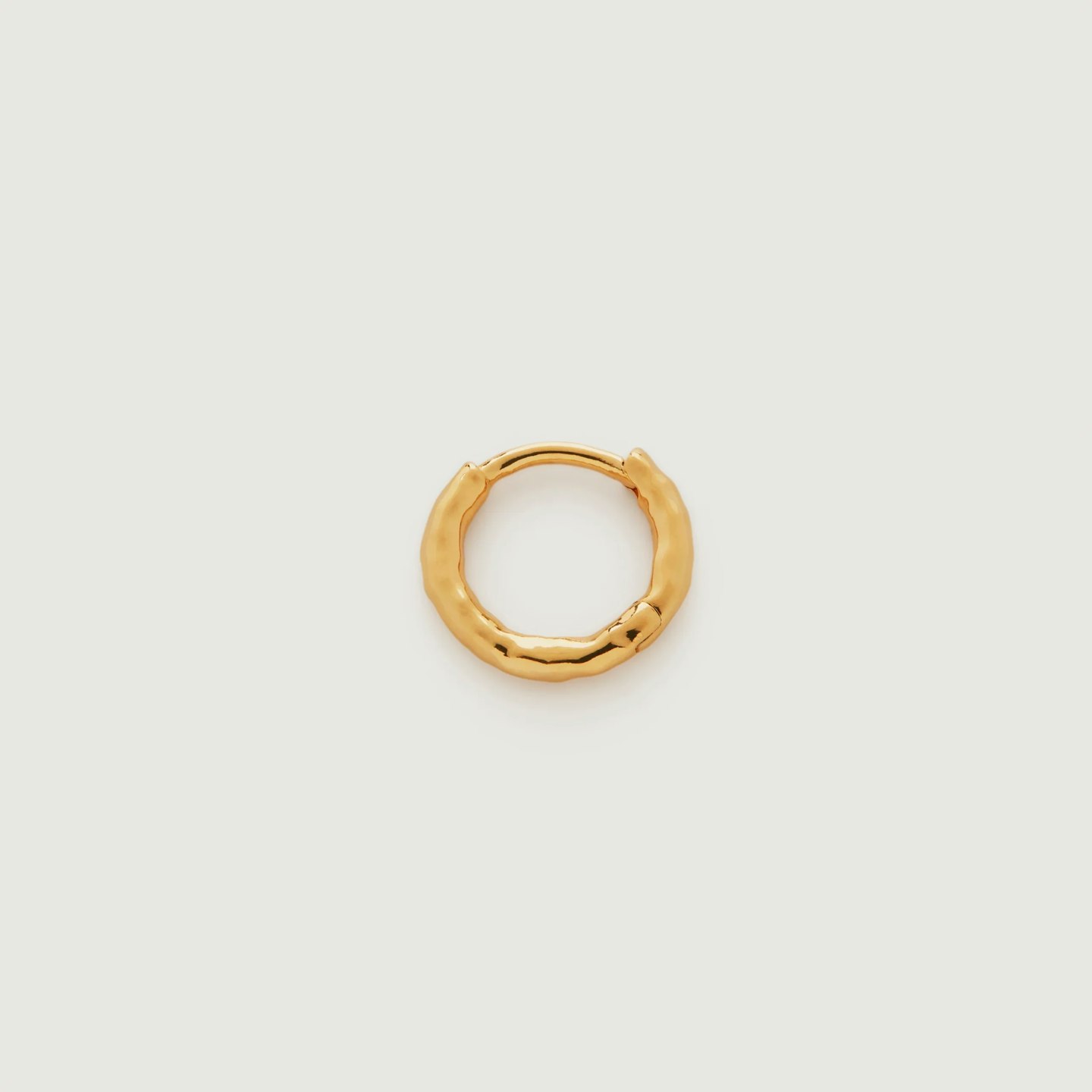
www.monicavinader.com
This dainty, golden hoop ticks serious boxes.
Gold? Titanium? Silver?
What jewellery materials are suited to a conch piercing? When it comes to piercings, the type of jewellery you choose matters. ‘At Monica Vinader, we only use titanium or solid gold to support the healing process as these metals are hypoallergenic,’ says Hook. ‘However, over time a variety of materials can be used in your conch piercing jewellery.’ Even after your piercing is fully healed it’s essential to select a piece of jewellery that is the right size for your piercing and is made of high-quality materials such as surgical steel, titanium, or gold. You can also wear different types of jewellery, including studs, hoops, and barbells.
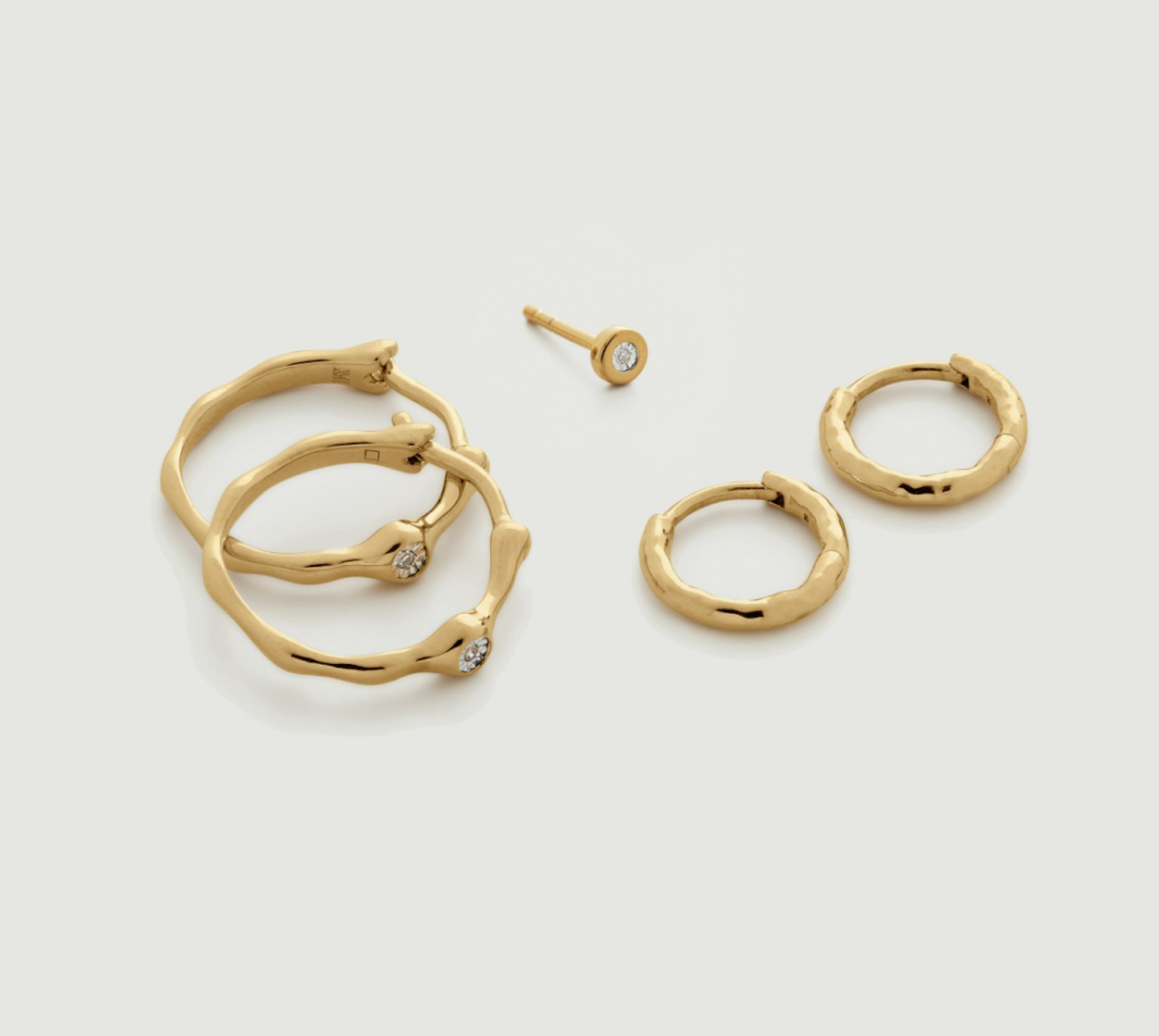
www.monicavinader.com
A pre-made ear party? Don't mind if we do.
Pain levels
How painful is a conch piercing? Does a conch piercing hurt? Some people describe the pain as a sharp pinch, while others find it to be more of a dull ache. That said, it is thought to be a slightly more painful piercing. ‘As it is a thicker part of the ear a conch piercing is slightly more painful than most other ear piercing,’ says Hook, ‘However it is all relative and depends on the individual's pain tolerance, so this will vary for each person.’ The good news is that the pain is usually brief and quickly fades after the piercing is done. ‘If it does continue to hurt after piercing seek advice from your piercer, says Grimes. ‘This is important to rule out the risk of infection.’
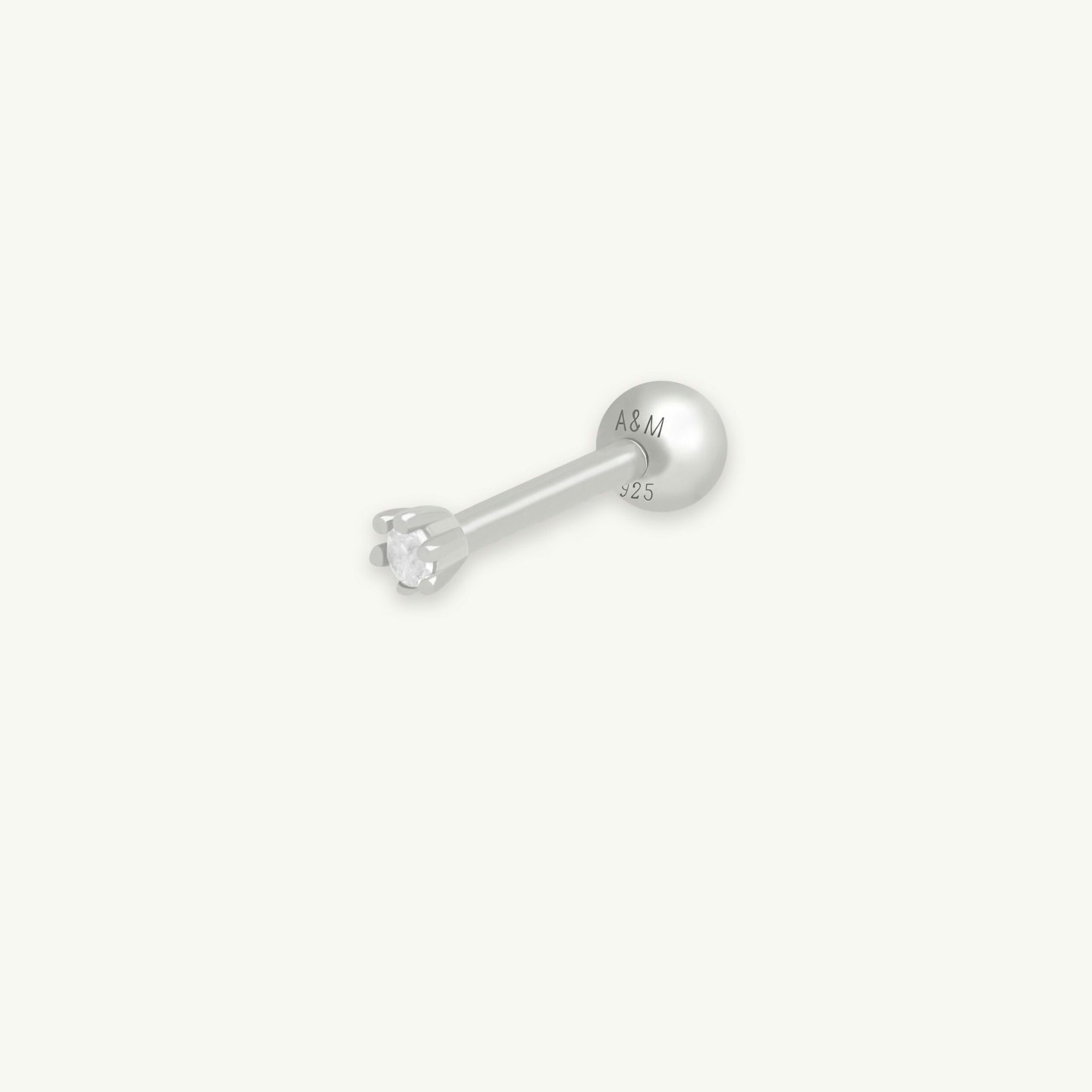
www.astridandmiyu.com
This tiny cubic zirconia resembles a dainty little flower.
Aftercare
What is the aftercare like?Like any piercing, aftercare is essential to prevent infection and promote healing. Here are some tips for caring for your new conch piercing:
• Clean the area twice a day with a saline solution or a mild soap and water.
• Avoid touching your piercing with dirty hands - wash hands before cleaning your piercing.
• Avoid sleeping on the side of your conch piercing - to prevent friction and pressure.
• Don't change the jewellery until the piercing is fully healed (you'll have plenty of time to do so later!)
• Don't swim in pools, hot tubs, or other bodies of water until your piercing is fully healed.
Healing time
How long does a conch piercing take to heal? Depending on the placement, Grimes tells us that conch piercings typically take longer to heal than standard lobe piercings . ‘This is because they are through cartilage rather than soft tissue,’ she explains. 'In my experience a conch piercing could take a minimum of twelve months to heal and in some cases, it might take eighteen months,’ adds Hook. Note that it is normal to experience some swelling and a bit of puss - but pay attention if things are starting to look a little concerning.
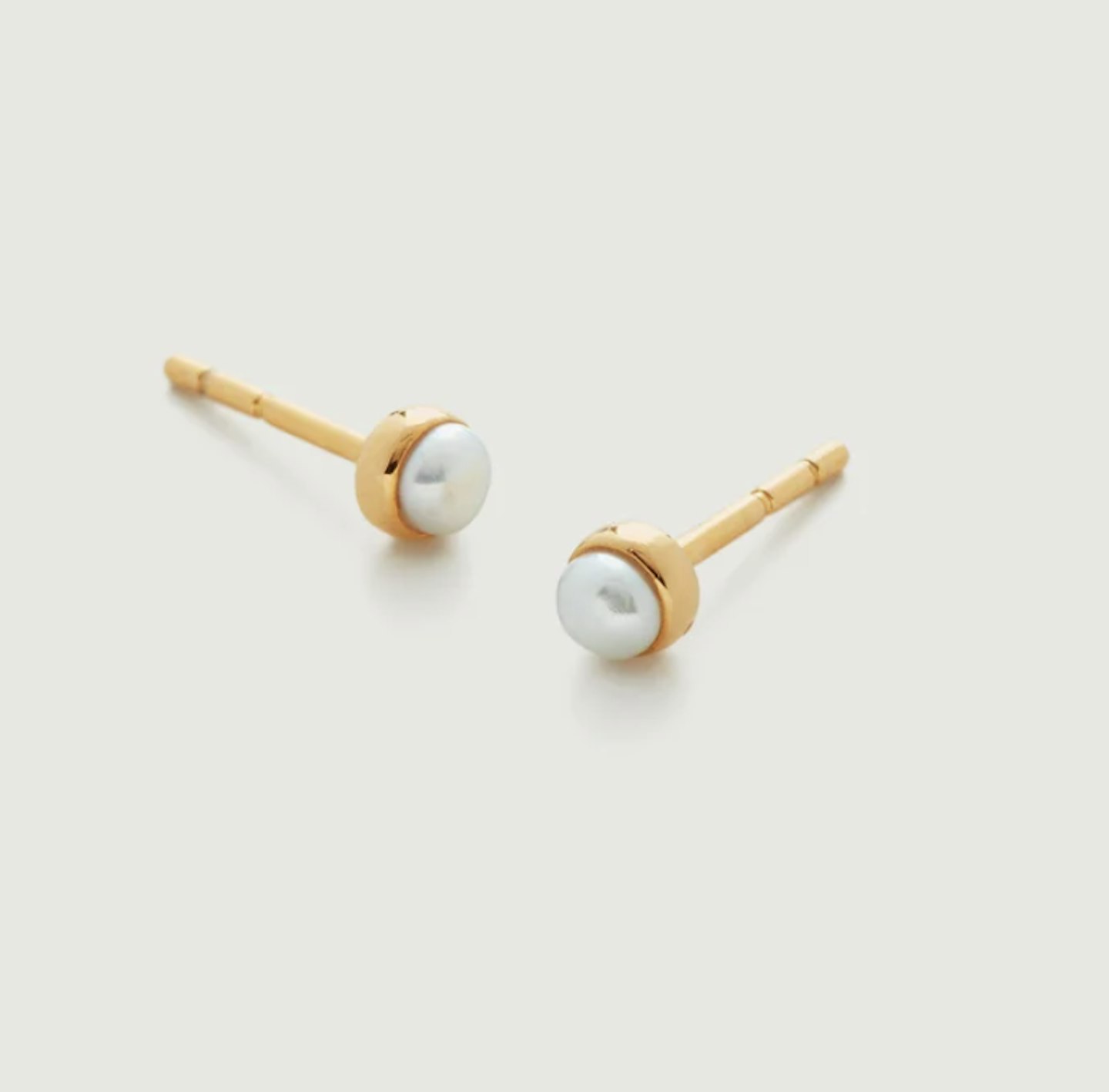
www.monicavinader.com
Delicate, dainty and oh so pretty.
How can you tell if your piercing is infected?
As aforementioned, a bit of trauma to the ear is normal. But excess puss, bleeding, redness and swelling is a cause for concern.
‘To prevent the risk of infection, I would recommend cleaning your piercing twice daily with saline solution whilst the piercing is healing,’ suggests Hook. ‘If your piercing develops a granuloma or keloid then it can become infected - it’s important to remember there are always some risks when it comes to piercings. A granuloma tends to occur if the piercing suffers any physical trauma (e.g getting caught on clothes or knocked) or if dirt gets trapped within it. A granuloma is treatable whereas a keloid scar is a lot more difficult to remove.’
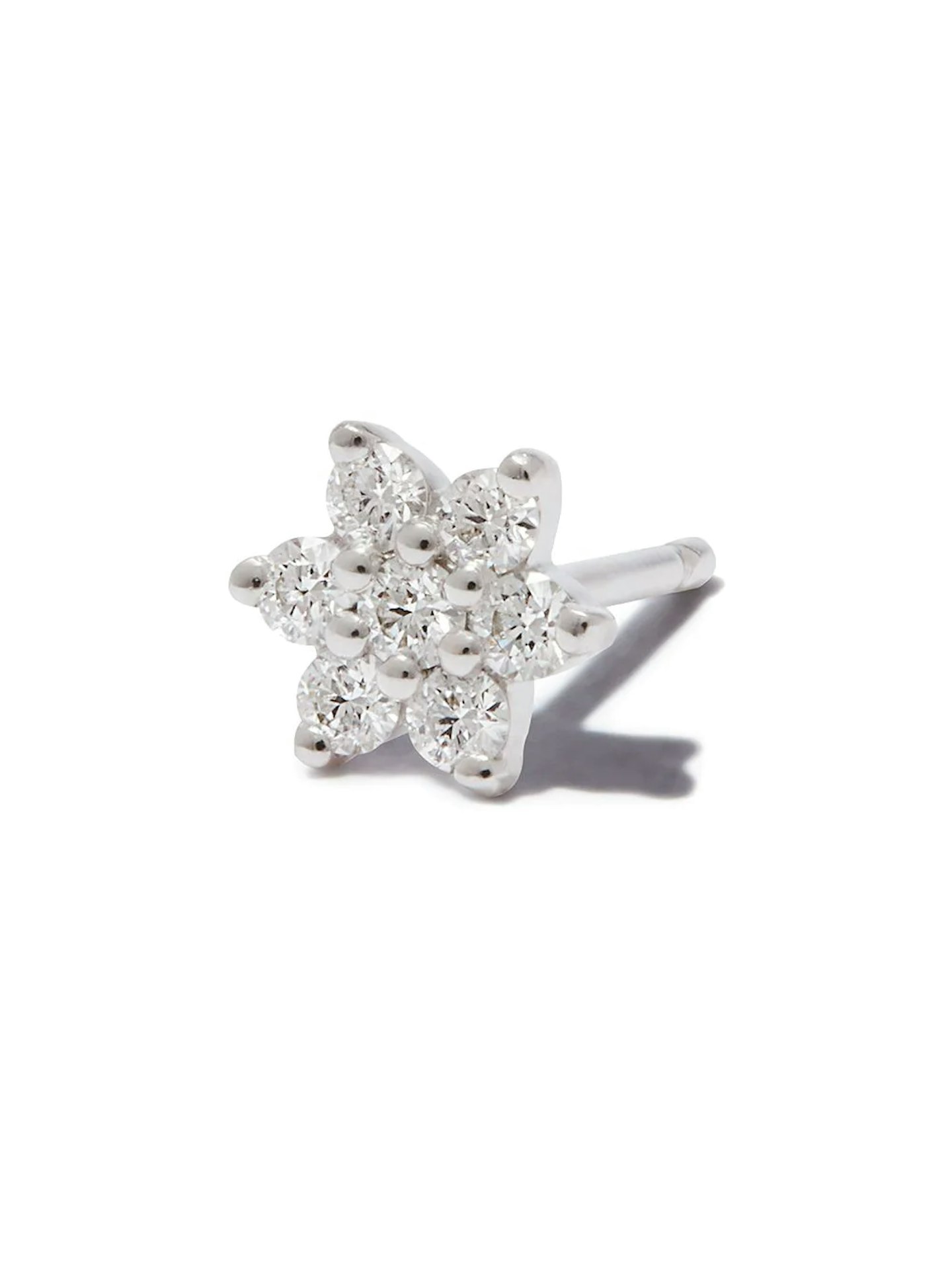
www.farfetch.com
Made from 18kt white gold and round cut perfectly to fit the shape of a flower.
When can you change out a conch piercing?
‘I would always recommend the long term approach here and wait for the piercing to be fully healed, before considering changing it,’ advises Hook. ‘My clients are always welcome to book a follow up appointment for guidance on changing the jewellery or if any healing issues have occurred - this is always a sign you’re in great hands.’

www.farfetch.com
This diamond hooped ring features white diamonds and would work perfectly in any earring stack.
Can you wear AirPods?
Good question. Grimes says, 'Aside from the daith piecing, with most ear piercings you can still wear any headphones - I'd advise over-ear headphones to minimise irritation.'
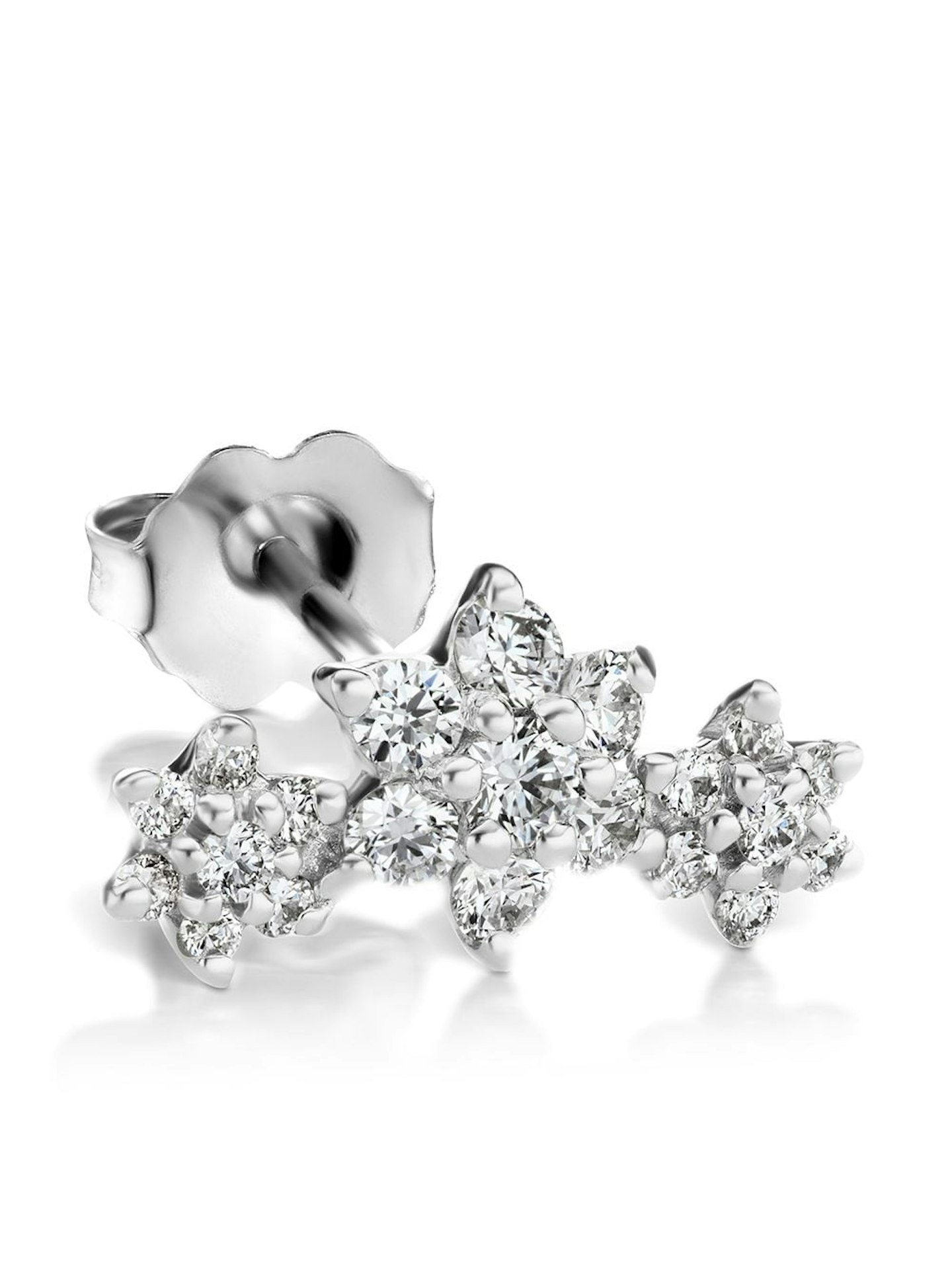
www.farfetch.com
This stud will catch the light beautifully
Main image credit: Jess Hunt via Instagram @astridandmiyu
Ear illustration credit: @astridandmiyu
Rachael Martin is Grazia's Junior Beauty Editor where she covers all things beauty, health and wellness
